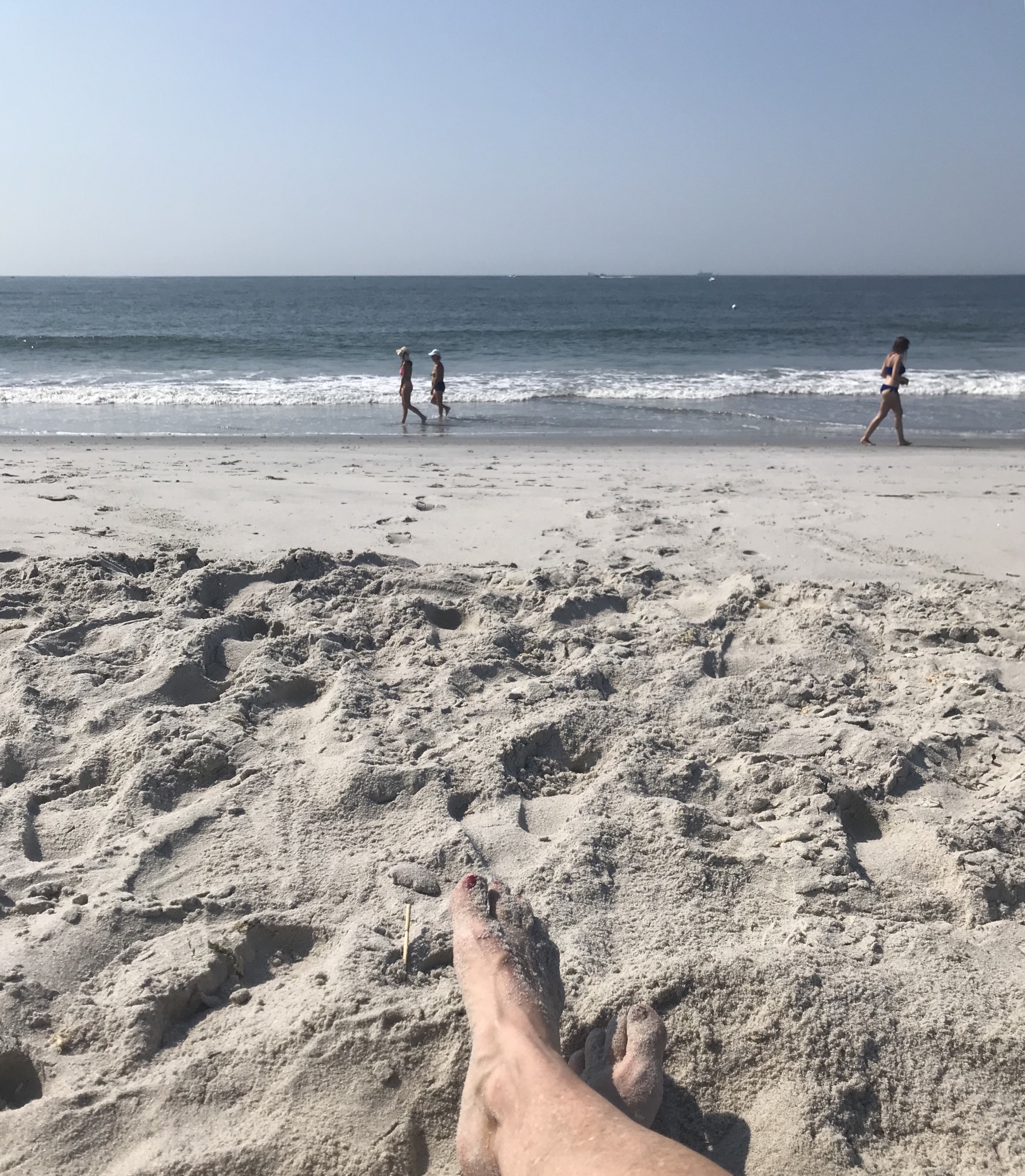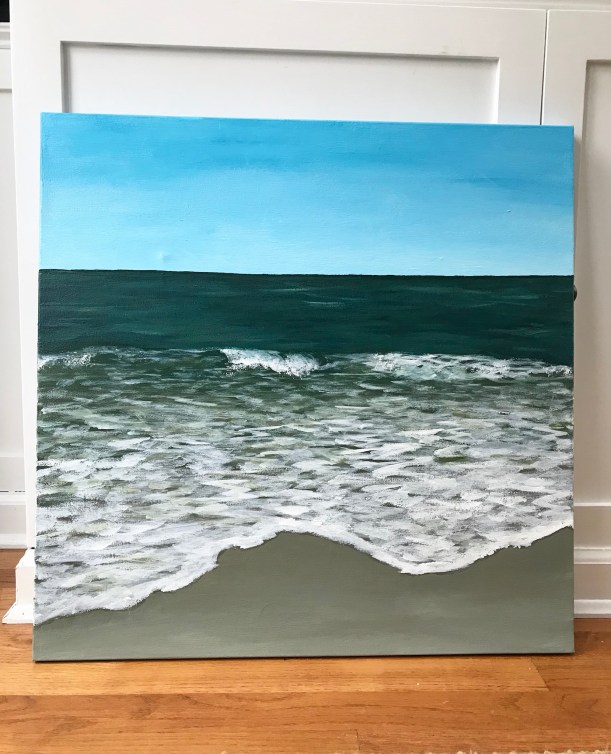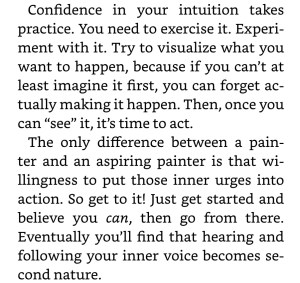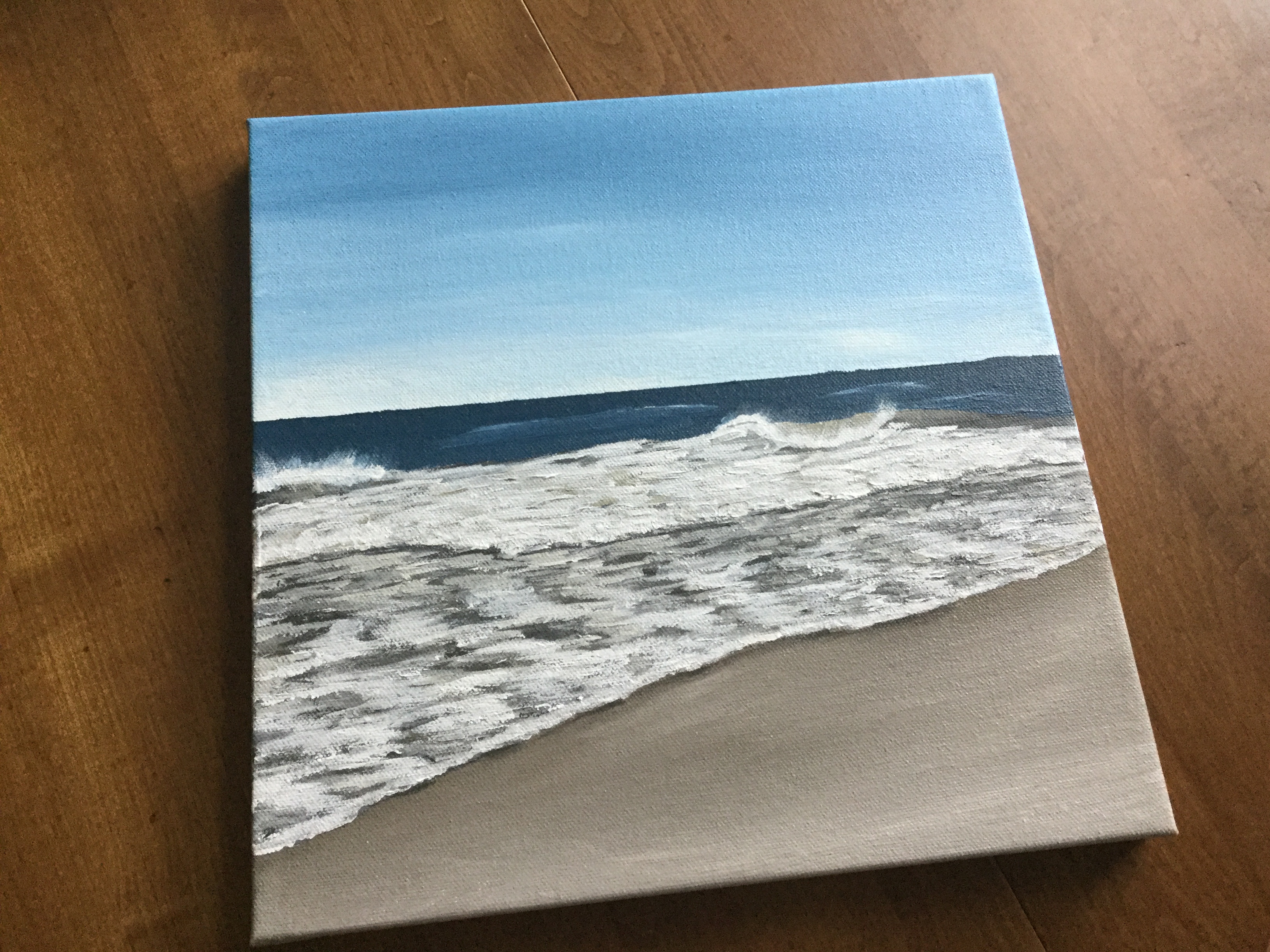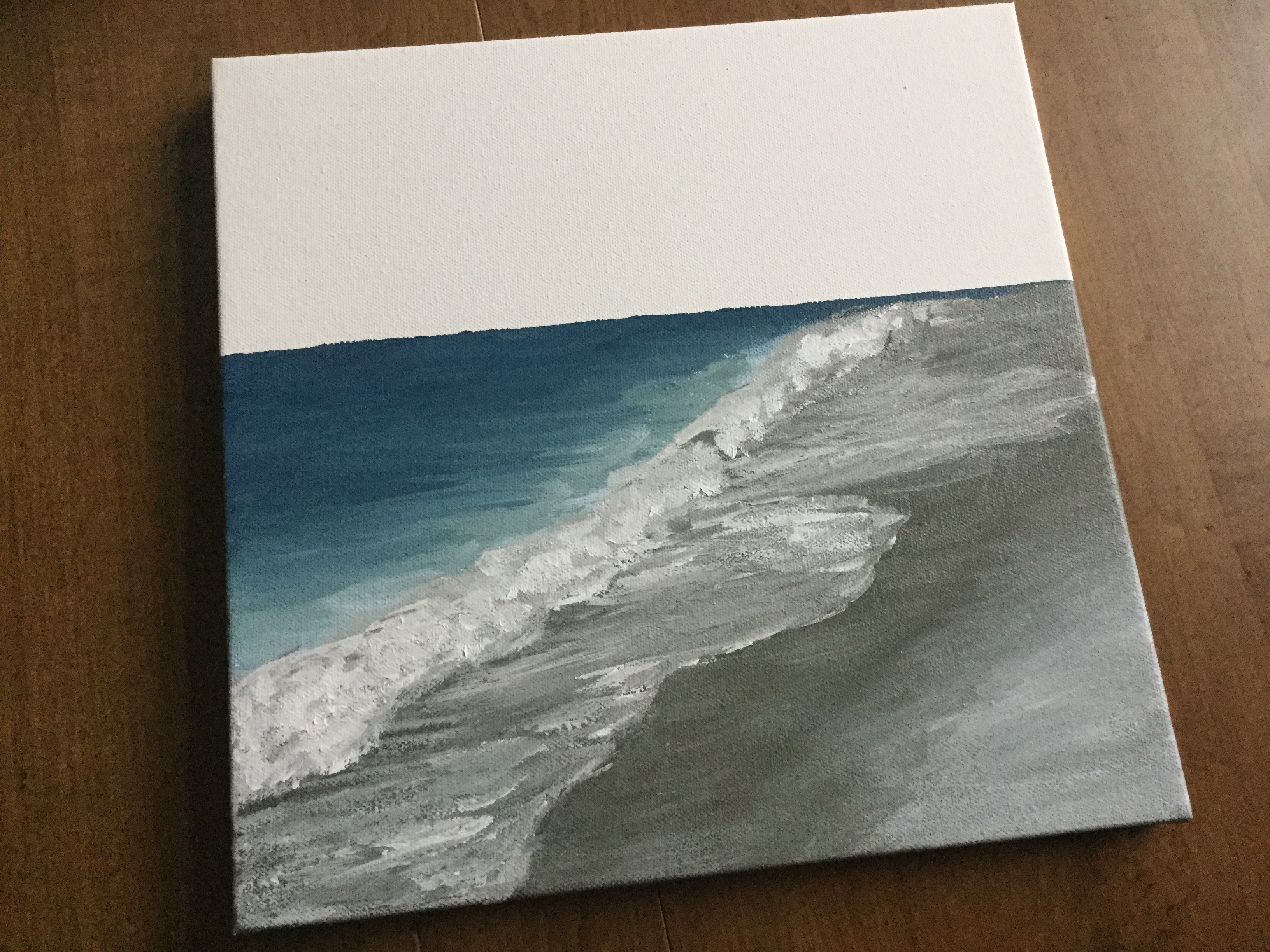I just finished this painting. I did the entire painting in one sitting with three colors and one big brush. It felt so good to have an idea, follow through and finish. Recently my creative practice has been sporadic. A lot of the creative things I do are tied to work or school. Did I tell you I’m back in school?! I just finished my first year in a Masters in Art Education program. But still, excuses, excuses.

I’ve been ecstatic about this painting since I finished it – which got me thinking. Things are slowing down a bit for summer. This small canvas is so doable. Maybe I could commit to doing one a week? I always do well with a goal and a plan, especially if I do some art supply shopping to motivate me.
Summer is about 10 weeks, so I’ll aim for 10 canvases but the real goal is to paint every week. I need to take stock of my supplies and make a list. Then it’s a trip to the art store – fun!
I need to remember to be open to inspiration. The painting above was inspired by a recent walk on the beach. That’s my favorite way to work – capturing inspiration when it strikes and painting it.
Any summer creative goals? I’d love to hear!





